When optometrist Travis Adlington decided to install an in-office finishing lab inside his Reno, Nev., practice, he didnt rely on ads or sales pitches to choose equipment. He judged for himself.
Since Dr. Adlington didnt know which edging system was the best, he put several to the test. He took a pair of nightmare frames (small eye size titanium frames that he says other labs had a very difficult time fitting) and a handful of uncut lenses (high plus and high minus) and presented these to every edging vendor at International Vision Expo West. He challenged each vendor to edge the frames, and then he picked the system that delivered the best results.
Whatever method you choose to select a finishing system, jump in and get started, Dr. Adlington says. Plan on an in-office lab from your first day of practice, he says. Just like putting in your exam equipment for patient care, plan to include an in-office finishing lab when you start your practice.
Almost any existing practice can benefit from an in-office lab, he adds. (The one exception: a practice in which most patients participate in a vision plan that requires you to use that plans lab.) But even just a few private-pay patients can make an in-office finishing lab worthwhile, Dr. Adlington says.
Three Advantages
There are three chief advantages to having an in-office lab, says optometrist Randy Fincher, who heads a multi-office private practice in the Denver area.
Service. Patients now demand convenience and quick turnaround time, Dr. Fincher says. A new pair of lenses can be ordered overnight, and when the uncut lenses arrive, the patient only needs to wait a few minutes while the optician or lab tech edges and fits the lenses. (Like other practices with in-office labs, Dr. Fincher keeps a stock of uncut lenses for patients who need same-day service.) Plus, patients can keep their favorite frames.
Quality. With the newest equipment, you can turn out finished jobs that are as good asand sometimes better thana professional high-volume lab. Doing work in-house means you can keep a closer eye on the finished product, Dr. Fincher says.
Savings. Costs in every area of the office are going up, and weve been able to really hold the line on lab costs, Dr. Fincher says. Skyrocketing overhead is held down by doing in-office edging.
You can save about 15% to 20% on each in-house job compared with the cost of sending them out to a lab, Dr. Adlington says. This savings more than pays for the investment in equipment and dedicated personnel, he says.
Fast turnaround time helps your accounts receivable, too, Dr. Fincher says. The quicker you get the job done, the sooner you can get paid.
Equipment and Service
As finishing equipment has advanced, the number of instruments required for an in-office lab has actually decreased. Some of these new edgers have replaced four or five pieces of equipment, Dr. Fincher says. What used to take an edger and a polisher and a blocker and a groover is now all incorporated into one instrument. Not only do you get more bang for your buck, but you can fit your lab into a smaller space.
So, what is required for an in-office finishing lab? Here are the basics needed, Dr. Adlington says:
An all-in-one edger/tracer/ blocker/groover/polisher. (Some instruments also drill.)
A manual lensometer.
A multi-pot tint unit.
Hand tools and parts.
Ultrasonic cleaner.
Counter space or lab bench and cabinets.
A stock inventory of single-vision uncut lenses (both CR-39 and polycarbonate).
The other required component: an experienced and dedicated lab tech or optician. While the new equipment allows almost any staff member to use it with minimal training, that doesnt mean that anyone can do it well, say both Dr. Adlington and Dr. Fincher. Thats why they advocate employing an experienced and skilled person to handle most of the work. (Still, Dr. Adlington has trained his entire staff to be able to use the equipment in a pinch.)
Having a skilled employee perform most of the lab work has a few advantages. For one, this reduces the spoilage rate. Dr. Adlington and his optician strive to keep their spoilage rate as close to 1% as possible. The industry standard is about 5% or below to keep a lab profitable, Dr. Fincher says. Because lenses are so expensive now, especially progressives and AR-coated lenses, you have to have somebody who knows what theyre doing, he says. Otherwise, your in-office lab venture will turn into a misadventure.
Secondly, an experienced employee dedicated to your in-office lab can perform frequent routine maintenance and calibration of the equipment. Because the new all-in-one systems can do more, more can go wrong with them. Get the people who work for you to be knowledgeable about taking good care of the equipment so you have to call in a technician less often, Dr. Fincher says.
Along these lines, be sure to inquire about service when choosing to buy a new piece of equipment. If the instrument breaks down, youll want it running again as soon as possible so that you can continue to deliver glasses to your patients. So, make sure theres a local service technician in your town or region. You could buy a wonderful piece of equipment, but if theres no service in your area, youre up the creekwithout an edger, Dr. Fincher says.
Still not sure if an in-office finishing lab is right for you? Do a cost analysis, Dr. Adlington says. Compare what a lab charges you for full-finish jobs against what you could save based on your volume, and balance this with the estimated cost of the equipment. You may find that once you have an in-office lab, the next pair of nightmare frames could be a patients dream come true.
| The Latest Lab Equipment | |
| Maxima Supreme Evolution (AIT). The new Maxima patternless edger combines precision servo motors with a new 4-D grooving and external/ internal safety bevel assembly. The mini bevel can fit all mountings in thin metal frames. The Combimax combines a tracer, blocker and centering device in a single module. The Opera drill has a curvature sensor to guide the bit to the ideal angle and depth for each hole. |
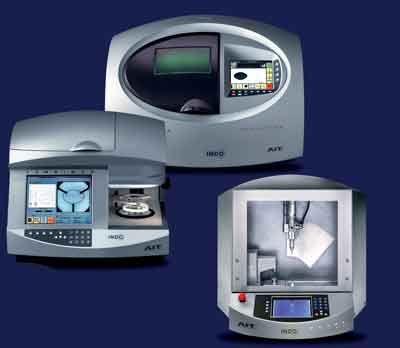 |
| Alta (Briot). The new Briot Alta finishing system performs all lens-processing steps automatically. It traces frames with 5-D measurements, reads lens powers and finds the optical center automatically. The device blocks the lenses, edges all lens materials, safety bevels, grooves, drills and polishes automatically. The Briot Alta features automatic settings for hydrophobic anti-reflective (AR)-coated lenses, Trivex, polycarbonate, high-index and fragile lenses. It can customize its settings, which allows you to choose the default settings that correspond to the types of jobs you process most often. |
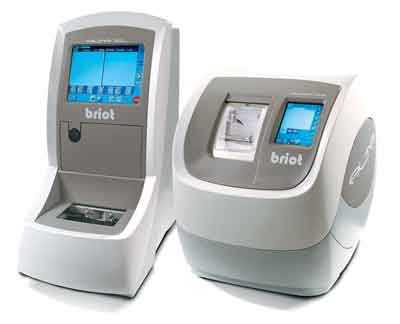 |
| Kappa CT (Gerber Coburn). This tracer and blocker eliminates every manual step in the finishing process, the company says. The Kappa CT uses 4-D tracing, and its software captures A, B, and frame DBL curve elevation. The high-performance mode allows you to measure the 4-D frame groove profile to optimize fitting in challenging frame sizes and shapes. The Kappa CT also traces frames with B sizes as small as 18mm. The Kappa CT can locate the optical center, bifocal segment or fitting cross in seconds, the company says. It automatically realigns the image on the prescribed axis and presents it in your view. Blocking is also automatic. Once the lens is in the blocking station, the Kappa CTs blocking arm picks up and automatically places the block on the lens, eliminating manual decentering or alignment. For more information, go to www.gerbercoburn.com, or call 1-800-843-1479. | 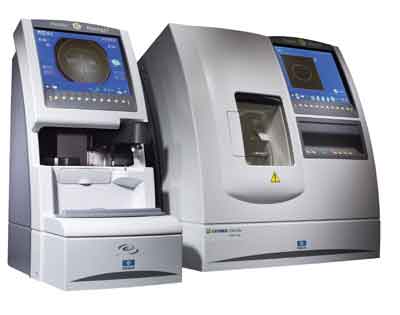 |
| 7EA Patternless Edger (National Optronics). This automated edging system is designed with a dedicated pick-and-place assembly unit. Using a pneumatic cap, the arm picks up the lens from its tray and places it in the edger. When the lens is complete, the arm removes the lens and replaces it in the tray before repeating the cycle. The 7EA also can drill up to six holes in each lens; hole diameters or slot widths range from 1mm to 5mm. The 7EA has a 15-inch color flat-panel LCD monitor on an adjustable hinge for multi-positioning of the viewing angle. The monitor displays hole placement for drilled lenses for viewing and adjustments. |
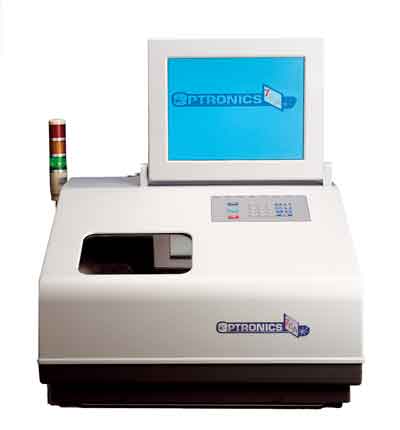 |
| nanoCLEAR AR (Optical Dynamics). The nanoCLEAR AR system builds AR coating, hard coat and UV protection into the lens. This system uses new nanoparticle technology in which a chemical bond is formed between each layer of the AR stack, the hard coat and the lens substrate. The result is an exterior surface that does not require the addition of a hydrophobic coating to make the lens cleanable. The nanoCLEAR AR system is designed to work with Optical Dynamics Q-2100R in-office lens casting system and can produce AR lenses in-office in about one hour. The process is computer controlled and easy for staff members to learn, the company says. |
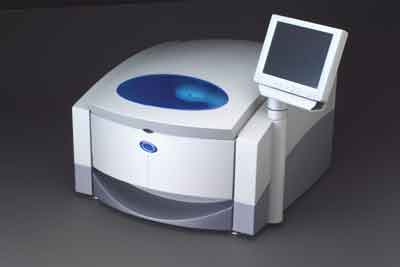 |
| Fast Grind 2200 (Super Systems Optical Technologies). The all-in-one Fast Grind system uses a simple three-pad process to generate, finish and polish prescription lenses using only tap water. There are no chemicals, resins or slurries, the company says. The Fast Grind unit requires only five square feet of counter space and is computer guided to eliminate the need for experienced personnel. Dispensing only one or two pairs of bifocals each day can justify the investment in Fast Grind, the company says. |
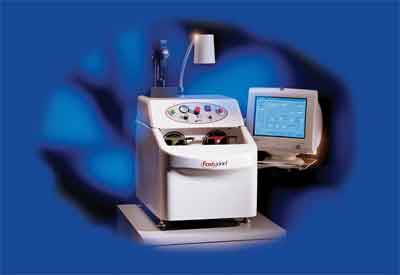 |
| Ultima 5000 Lens Finishing System (Topcon). The Ultima 5000 can edge all types of lens materials, and features a color LCD screen, precision 3-D frame tracing, safety beveling, safety beveling polishing, grooving and diamond-luster polishing. The Windows-based operating system allows for easy processing of all current and future lens materials, the company says. The system is available in three different models: the entry-level 5000 model, the SG model (which adds safety beveling and grooving), and the higher-speed XPRESS with cosmetic beveling. |
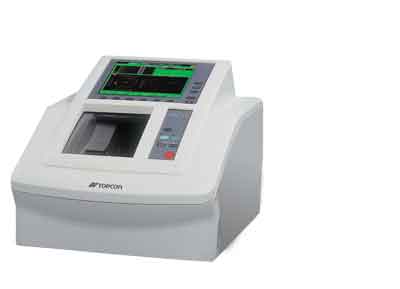 |
| ME-1000 DESIGN+ Multi-Function Edger (Santinelli). The new ME-1000 DESIGN+ edges, polishes, grooves, drills and applies a safety bevel, the company says. This upgrade to the companys ME-1000 edger features exclusive partial grooving and lens facet functions. These enable you to expand, create and customize rimless eyewear. Using the partial grooving function, the groove width and depth can be partially altered, making the groove in which the nylon cord sits barely noticeable. The facet processing function can be applied to the lens outline, providing a jewel-like finish, the company says. Both front and rear facets are available, and the operator can easily set the facet amount and width. A sophisticated 3-D simulation of the lens is provided on the units touch panel, conveying visual confirmation of the result prior to actual processing. For more information, go to www.santinelli.com, or call |
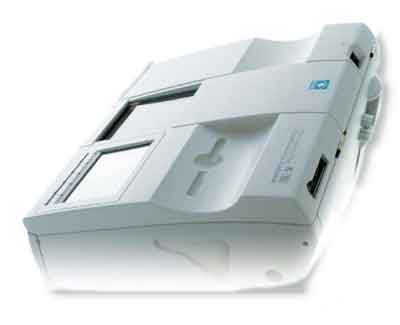 |

